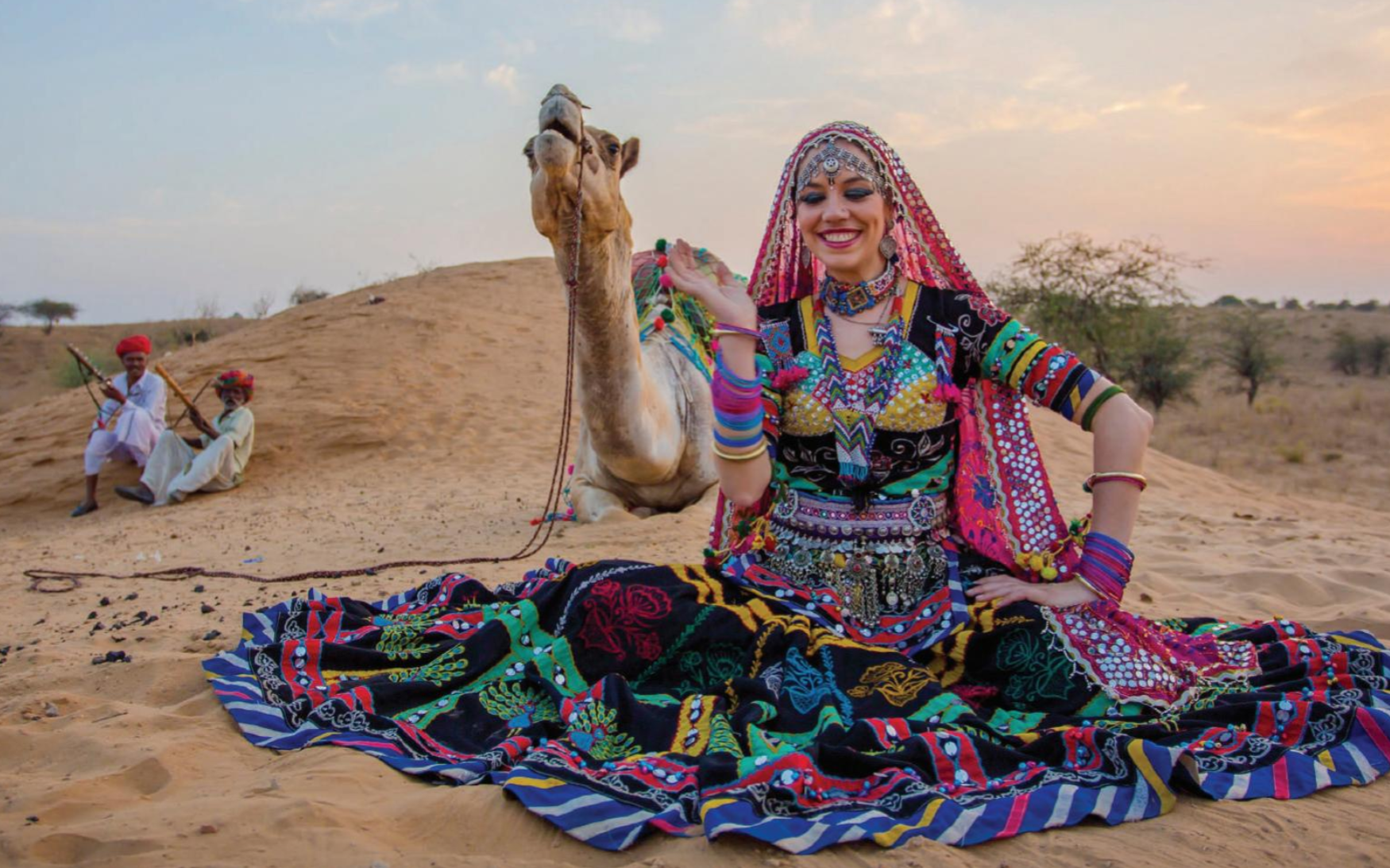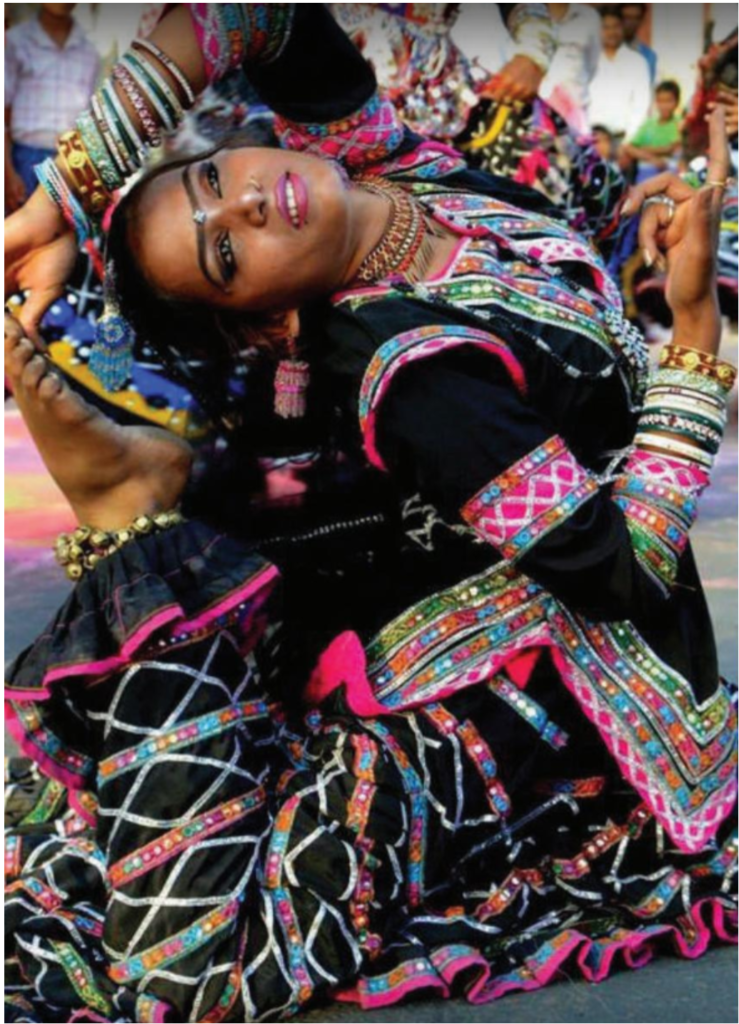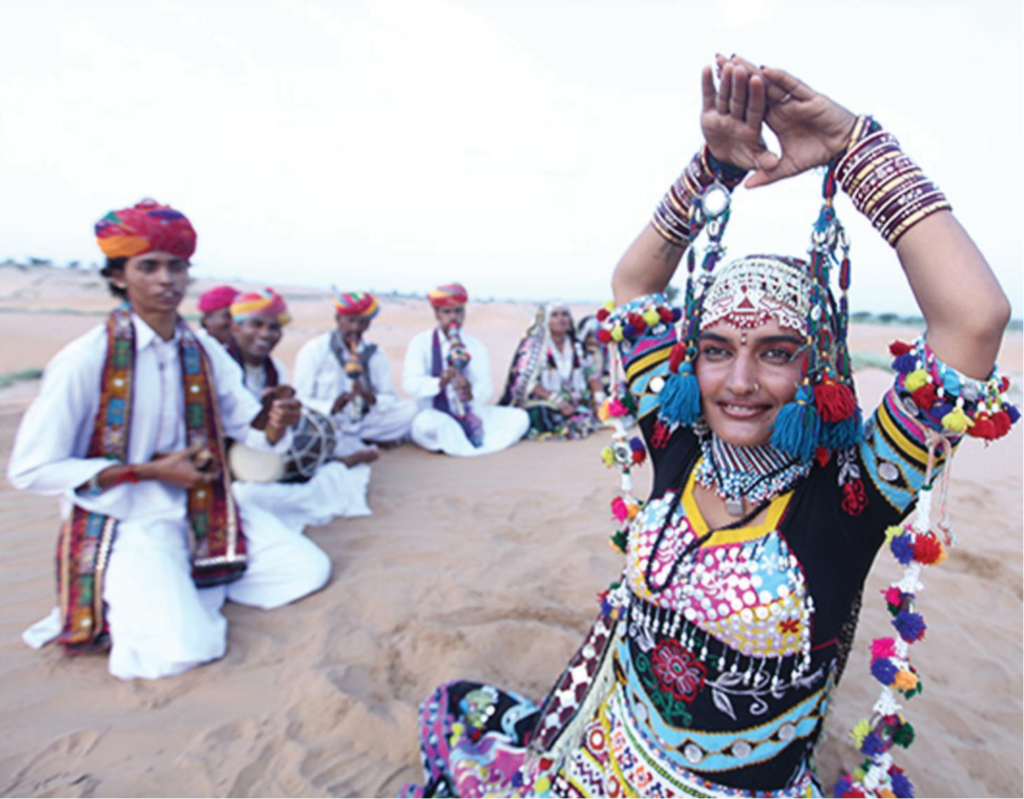Folk Dances of India: Kalbeliya
Irrespective of whether you have been to Rajasthan, you would have definitely seen or heard about the desert state’s iconic Kalbeliya dance. Visuals of Rajasthan women twirling at a dizzying pace, their carefully crafted clothes and jewellery, are engraved in our collective memory. The dance can be seen everywhere at festivals, in folk dance events, on tv.
Kalbeliya, a Rajasthani tribe commonly known as the saperas, trace their ancestry back to a small district of Kanlipar, Rajasthan.1 These scheduled tribes lead a nomadic life and travel from places to places frequently. Their traditional occupation is catching snakes and trading snake venom; however, they are seen as street performers at many cultural festivals worldwide. Kalbeliya men carried cobras in cane baskets from door to door in villages while their women sang and danced for the masses. Dance is an integral part of this mesmerizing vagabond gypsy tribe.

They have been a fringe group in our ever-growing society and continue to live outside villages in makeshift camp areas called deras. Over the generations, they have acquired a keen sense of understanding of the local flora and fauna. They are well known for their herbal remedies for various ailments, which also acts as an alternate income source. Repercussions of the Wildlife Act of 1972 pushed these Kalbelias out of their forests’ comfort zone and into the fast-moving lives of the cities where they are left to fend for themselves. This community has developed a rich cultural heritage, leading to widespread recognition, which draws visitors nationally and internationally. The Kalbelia folk songs and dances of Rajasthan were declared a part of UNESCO’s Intangible Heritage List in 2010.
This traditional dance form performed and enjoyed by the Kalbeliyan community of Rajasthani snake charmers encompasses swirling and graceful movements that make this dance a treat to behold.2 Their dances and songs are a matter of pride and a marker of belonging for the Kalbelias, which reflect the imaginative adaptation of this group of snake charmers to ever-changing socioeconomic circumstances in their Rajasthani society.2 Women wear bright and black flowing skirts, shimmering jewellery dancing to the beats of traditional musical instruments played by men. The classic musical instruments used during these festivities are the pungi, a woodwind instrument traditionally played to capture snakes, the dufli, the khanjari, a percussion instrument, and the morchang khuralio and the dholak to create the rhythm on which the dancers perform. These dancers try to replicate a serpent’s movements while performing this joyous and vigorous folk art form. They wear an Angrakhi on the top and Lehengha on the bottom, covering their head with an Odhani.3 They are tattooed in traditional designs and covered in clothes with small mirrors and shiny threads which represent them. These clothes are filled with hand-embroidered bright red and black hues to express the feeling of celebration and ignite a sense of belongingness that soothe the eyes and atmosphere during a festival.3
Kalbelia folk songs are based on their folklore and mythology with memorable characters and dances from their ancestry and culture. They have a reputation for composing lyrics spontaneously and improvising songs during performances.3 These songs, dances and even clothes are part of a long-standing tradition handed down from generation to generation. They neither come with texts nor training manuals but simply passed through word of mouth using these mythological stories.3
An academy has been set up in Copenhagen, Denmark by “Gulabo Sapera’s Music and Dance School” for this globally acknowledged art form. With the ever-rising popularity of folk arts, this dance form has only improvised over the years. It has become a freedom of expression for these women who are pushed into a life of poverty and rules which govern their culture and control their ideas. This tribe enlightens us about our traditions and brings out the true essence of a gypsy lifestyle and identity. Presently, the largest population of Kalbelias resides in the Pali district, followed by Ajmer, Chittorgarh and Udaipur. The Kalbelias are very happy-go-lucky people and have a genuinely positive attitude towards life. They are satisfied with what they have and live together in peace and harmony.3
_____________________________
Independent Project by Sezal Chug
Guide: Prof. Manohar Khushalani
________________________________
-
1.The Free Encyclopedia W. Kalbelia. From Wikipedia, the free encyclopedia. Published February 1, 2007. Accessed February 22, 2021. https://en.wikipedia.org/wiki/Kalbelia
-
2.Incredible I. Incredible India . Kalbeliya. Published February 22, 2021. Accessed February 22, 2021. https://www.incredibleindia.org/content/incredible-india-v2/en/destinations/jaisalmer/kalbeliya.html
-
3.issuu .com. Kalbeliya. The Saperas of Rajasthan . Published February 22, 2021. Accessed February 22, 2021. https://issuu.com/swarnaliroy5/docs/craft_doc-_kalbeliya_final_single_c


